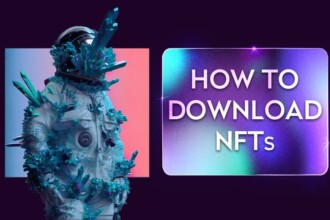Even though Bitcoin is a pioneer in distributed ledger technology, it has been struggling to meet the expectations of payment platforms. Scalability remains a significant hindrance to BTC adoption for commerce. The Lightning Network joined Bitcoin with a solution for the problems. What is Lightning Network?
The Lightning Network is a layer-2 protocol attached to the main chain of Bitcoin. It enables micropayment channels for BTC transactions quickly and cheaply. You may be inquisitive to learn how it solves the scalability issue of the most trusted digital currency?
Here is a detailed analysis of the Bitcoin Lightning Network and how it became a new choice for Bitcoin transactions.
What is Lightning Network?
Lightning Network is a part of the layer-2 crypto technology revolutions. The leading blockchain is named ‘Layer-1 blockchain, and the small chain linked to the main chain is known as the layer-2 chain.
Practically, a Lightning Network is an off-chain decentralized system of smart contracts to conduct Bitcoin transactions. It reduces on-chain transaction overcrowding.
The primary goal of the Lightning Network is to address the scalability problems of Bitcoin transactions. Besides, it authorizes custodian-free, quick, high volume micro-payments for Bitcoin.
The emergence of the Lightning Network
In 2015, Thaddeus Dryja and Joseph Poon mentioned the Lightning Network in a research paper. According to the authors, ‘ two independent parties can conduct transactions through an off-chain channel linked to the Mainnet, thus helping to reduce the transaction rush on the Mainnet.’
Lightning Network testnet embarked in May 2016, and the implementation stage was named alpha. The first transaction through the Lightning Network was in Dec 2017.
In 2018, Lightning Lab launched the Beta version and implemented it to the Bitcoin mainnet. Later in 2019, a pseudonymous personality named Hodlonaut has paid 0.001 BTC to a wallet using the Lightning Network. It was considered as an initiative for Lightning Network transactions worldwide.
How does Bitcoin Lightning Network work?
The Lightning Network is a layer-2 payment protocol fastened to the Bitcoin blockchain and manages payments between two parties. It has its nodes and software to communicate with the Bitcoin blockchain. Information is passed through mini ledger anointed channels.
Both parties have to set up a new channel to initiate a Lightning Network transaction. Members of a channel can perform any number of transactions within their limit after establishing the payment channel. Individuals need to mention the maximum limit of Bitcoin transactions while opening the channel.
The Lightning Network forms smart contracts between the partakers at the back end. The smart contract is coded with certain agreements and conditions that cannot be altered later. Channel members have to agree with these conditions before initiating the transaction.
Parties involved in the transaction must enter the correct amount that does not exceed the maximum limit. Smart contract codes will automatically execute when it meets the requirements. Balances are updated on the respective account upon transaction completion.
Dealings are conducted through the shortest time-consuming path, and a transaction fee is deducted based on the amount dealt. Once the transaction is ended and verified, the system will anonymize transactions within the payment channel.
Only opening and closing transactions rely upon the main blockchain. The rest of the payments are performed independently on off-chain. Users are permitted to close the payment channels at any time and settle the final balance with the Bitcoin blockchain. However, it is better to establish a channel between the parties, who often conduct Bitcoin transactions.
Importantly, it is not necessary to always establish a new channel. A Lightning Network can find existing mutual channels and conduct transactions. When the Lightning Network fails to correctly deliver the money to the creditor’s account, the amount will be refunded to the initiated account.
How Lightning Network Ensure Security
The network uses Hash Time Lock Contracts (HTLCs) to ensure the security of channels. Individuals can set conditions before initiating transactions, which will help protect the BTC transfer from fraud issues.
If X and Y are involved in a transaction, and X is paying an amount to Y, the transaction is confirmed if Y can provide the correct hash (H) within the permitted time. However, if Y fails to provide the hash, the system cannot complete the payment. The BTC sent will be refunded to X’s account in such a case.
If more than two people are interested in a transaction, HTLC is set up along the payment path. Each link will obtain the payment of the earlier link.
It is mandatory to retrieve the hash to trigger the payment of one link to the next because if the other entity cannot cooperate, the link will recover its funds once the HTLC countdown has expired.
HTLC time works in each payment stage to ensure that the settlement is completed at the location or redirected back to the initiated account. The process makes the Bitcoin lightning transaction secure without compromising speed and accuracy.
Wallets Compatible with Lightning Network
Lightning Network-compatible wallets are necessary to conduct transactions through the network. Custodial wallets and non-custodial wallets are the two main types of wallets available.
- Custodial wallets
These are beginner-friendly wallets by which users can efficiently execute transactions with passwords similar to standard payment applications. If the user is unable to remember the password, it can be retrieved from the system. Strike, Blue wallet, Wallet of Satoshi are examples of custodial wallets.
- Non-custodial wallets
These are user-controlled wallets suitable for experienced users and traders. The funds are inaccessible if the user forgets or loses their password. So users need to be familiar with the backup and restoring process. Muun, Breeze, Phoenix, Zap are examples of non-custodial wallets.
Also Read: Crypto Wallets: All You Need To Know About Their Types
Advantages of Bitcoin Lightning Network?
The behemoth takes more than ten minutes to confirm a transaction. Even if all the nodes work simultaneously, Bitcoin cannot achieve scalability but creates on-chain congestion.
The probable solution is to off-load the transaction to a second layer. The second layer off-chain is the Bitcoin Lightning Network. Hence, Lightning Network off-chain channels are intended to help Bitcoin on the scalability part by handling transactions between untrusted parties.
Individuals may come across the scenario of paying a transaction fee higher than the transferred amount during a Bitcoin commerce. That is where Lightning Network comes into play. Users can send any decimal fraction of BTC with a minimum transaction fee through established channels of a Lightning Network.
Bitcoin blockchains require one hour to add six blocks, whereas the Lightning Network does not require block confirmations. Therefore, Lightning Network processes instant BTC payments in retail shops or user-to-user devices.
Micropayments are impractical on Bitcoin’s main blockchain. It needs a minimum output size and a fixed fee for every transaction. At the same time, the Lightning Network entitles users to accomplish micropayments without custodial risk.
Features of Bitcoin Lightning Network
Peer-to-peer transactions in the Lightning Network are executed within seconds without any third-party involvement. Initial transactions for activating the channel and final transactions for closing the channel need the main blockchain’s participation. All other transactions can be performed in the Bitcoin Lightning Network, helping reduce the Bitcoin blockchain load.
If two parties involved in a channel want to cooperate for a long time, they can remain the channel open indefinitely. There is no mandate or maximum time to close a channel. It solely depends on the decision of parties concerned in commerce.
There is no closure for closing Bitcoin Lightning Network channels. Users can seal the channel immediately with a mutual understanding of all the channel members. When a channel partner is unwilling to cooperate, and one member wants to close the channel, it is possible, but it is a hassle.
Offline transactions through the Lightning Network are secured and trusted. Lightning Network transaction ledgers will update the mainchain when the channel is closed.
Bitcoin Lightning Network allows payments to be routed across many blockchains. Nevertheless, other chains need to support the same hash function. Users can opt for channels signed by multiple keys to ensure additional security for payments.
Onion routing, a technique for anonymous routing, is an essential feature of the Bitcoin Lightning Network. Routing messages in Lightning Network are compressed as layers of encryption, just like layers in an onion. So, it is named onion routing.
When the encrypted data passes through the nodes in the network, each node will peel one layer of it and transfer the remaining to the next. The final layer of the routing messages will decrypt at the destination.
Each intermediary can only collect the information of the immediately preceding and following node. Intermediate nodes cannot collect sender information or destination address; thus, payment parties remain anonymous.
Issues of Bitcoin Lightning Network
Lightning Network on high-traffic occasions met with issues such as transaction confirmations and routing fees. Validators do not always validate smaller amounts of trade. Accordingly, traders must pay a routing fee and stay in the queue for validation.
A separate wallet is required to use the Lightning Network. Finding this wallet is easy, but the first payment from the traditional wallet to the Lightning Network wallet levies a fee. After putting BTC on the wallet, the user needs to lock this for creating a payment channel. Though the concept seems easy, it is expensive to some extent.
When the first party in the payment channel chooses to close the channel and the second party is offline, the first party can steal the funds. When the second party comes online, he loses the money and is helpless since the first party has gone offline and there is no way to contact him. Users can take third-party protection services like Watchtowers by paying a fee to solve the issue.
Lightning Network even struggles with malicious attacks and scams. Because all the outgoing transactions are not verified, in addition to that, incomplete payments may take many days to refund to the original wallet.
Use Cases
Twitter permits users to send and receive Bitcoin tips employing the Lightning Network. Twitter accomplishes this using Lightning Network compatible applications named ‘Strike.’ Before Twitter, Substack, an American online platform for subscription newsletters, configured payments through Lightning Network.
BitFinex, one of the top cryptocurrency exchanges, also supports the deposit and withdrawal of Bitcoin using the Bitcoin Lightning Network. According to the team, the Lightning Network boosts Bitcoin payments, which will help for mass adoption.
Paxful, a peer-to-peer digital asset marketplace, has integrated Lightning Network for BTC payments. Furthermore, individuals who need to pay for goods and services can use the facility. Users will perform quick transactions with a lower fee using the Lightning Network.
EI-Salvador, the first nation to announce Bitcoin as legal tender, created a Lightning Network-compatible wallet for Bitcoin transactions. The initiative aims to save the citizens from high transaction fees.
Conclusion
So, can you buy a coffee using BTC?
Yes!
Bitcoin Lightning Network emerged as a new solution for Bitcoin transactions. Especially the micropayment service has got tremendous attention among Bitcoin enthusiasts. Lightning Network supports Bitcoin to off-load numerous transactions and reduce the traffic of the Bitcoin blockchain. Therefore, it is an excellent solution for the long confirmation time and scalability issues.
Bitcoin Lightning Network grew to mainstream adoption as cryptocurrency exchanges integrated it for BTC transactions. It is all set to poise Bitcoin trades for the future. If Lightning Network continues to grow, the industry can expect new wallets and technology to solve the current issues associated with Bitcoin Lightning Network.
Also Read: How does Bitcoin Affect the Environment?







